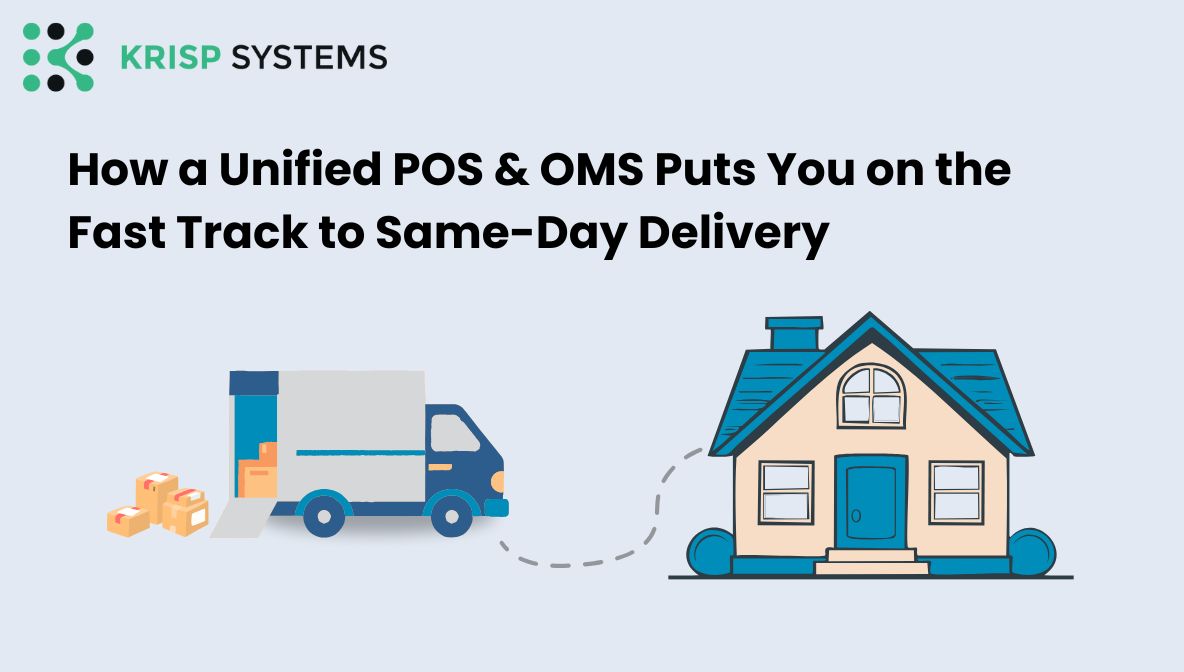Retail Investment Season and the Cost of Fragmentation
As retailers plan their 2026 budgets, one theme continues to rise to the top of boardroom discussions: technology integration. The rush to modernise systems is not just about innovation. It is about fixing a quiet problem that costs more each year — fragmented operations.
Disconnected Point of Sale (POS) and Order Management Systems (OMS) might appear functional on the surface, but behind the scenes, they create inefficiencies that drain resources and limit growth. From double handling of data to missed fulfilment opportunities, these issues erode profit margins and slow customer response times.
Connecting your POS and OMS before 2026 is not just an upgrade. It is an investment in long-term clarity, agility, and measurable return.
The Hidden Costs of Disconnected Systems
A retailer can only move as fast as its data. When systems are separated, teams work harder to access information that should be instant.
Some of the most common costs of disconnection include:
- Missed sales opportunities due to inaccurate or outdated inventory data
- Slow fulfilment times caused by manual processes and poor coordination
- High return rates from inconsistent order and stock visibility
- Staff inefficiencies from managing separate platforms for sales and orders
Every time your systems fail to communicate, you lose time, productivity, and customer trust. The cost of disconnection grows quietly but steadily, often going unnoticed until it affects performance at scale.
Connecting POS and OMS: Where the ROI Comes From
When POS and OMS systems share data, every aspect of retail becomes more predictable and more efficient.
Operational ROI
A unified platform eliminates redundant tasks, freeing teams to focus on customers rather than data entry. Inventory updates happen automatically across channels, reducing errors and improving speed.
Fulfillment ROI
Orders can be routed intelligently based on location or stock availability. Ship-from-store becomes easier, and customers receive faster, more accurate deliveries. These improvements lead to reduced logistics costs and fewer returns.
Customer ROI
Consistent data means consistent experiences. Customers see accurate stock levels, receive on-time deliveries, and enjoy flexible return options. Over time, this builds loyalty and lifetime value.Retailers using unified POS-OMS systems often report a 20 to 30 percent increase in operational efficiency within the first year.
Beyond Cost Savings: The Strategic ROI
The benefits of unification go beyond immediate savings. A connected POS and OMS provides the foundation for smarter retail strategy.
With shared data, retailers can:
- Forecast demand more accurately
- Optimise stock levels by region or channel
- Analyse customer behaviour across all touchpoints
- Adapt faster to new sales trends or seasonal demand
This level of insight turns operations into a strategic advantage. Instead of reacting to challenges, unified retailers anticipate them and respond with confidence.
Why 2025 Is the Time to Connect
The window for preparing 2026 retail systems is closing. Q4 is when many retailers finalise their technology investments for the next fiscal year. Implementing integration before the year ends allows your business to start 2026 with unified data, ready to capture every sale from day one.
Krisp Systems’ unified POS and OMS platform delivers the speed, accuracy, and flexibility needed to manage modern retail environments. It is designed to simplify integration without disrupting daily operations, so retailers can focus on growth, not transition.
Conclusion: Invest in Clarity Before 2026
Unifying your POS and OMS is not just a systems decision. It is a business decision that improves efficiency, supports data-driven growth, and protects profitability.
As 2026 approaches, retailers who choose connection over fragmentation will enter the new year with stronger foundations and greater control. The true ROI of unification is clarity — across data, operations, and customer experience.See the real ROI of unified retail systems.
Discover how Krisp Systems’ Unified POS and OMS helps retailers improve efficiency, accuracy, and customer experience.
Explore Unified POS-OMS →
Frequently Asked Questions (FAQs)
1. What is the ROI of connecting POS and OMS?
The ROI comes from improved efficiency, faster fulfilment, fewer manual errors, and stronger customer retention. Retailers gain both immediate cost savings and long-term growth through better visibility and coordination
2. How quickly can retailers see results after unifying systems?
Most retailers begin seeing operational improvements within a few months of integration. Real-time inventory accuracy, faster order fulfilment, and reduced staff workload create measurable ROI early on.
3. Does a unified POS and OMS benefit both physical and online stores?
Yes. A unified POS and OMS connects every sales channel, ensuring that in-store and online systems share accurate inventory and order information. This creates a seamless experience for both staff and customers.
4. How does connecting POS and OMS help with forecasting?
Unified systems consolidate sales and inventory data, giving retailers clear visibility into product demand. This helps forecast stock needs, plan promotions, and manage supplier orders more accurately.
5. Why is it important to integrate before 2026?
Integrating before 2026 allows retailers to start the new year with connected systems, ready to handle new sales cycles, seasonal shifts, and technology updates without disruption.
If you are ready to discuss how unified retail systems can fit your 2026 strategy,
Contact the Krisp Team


